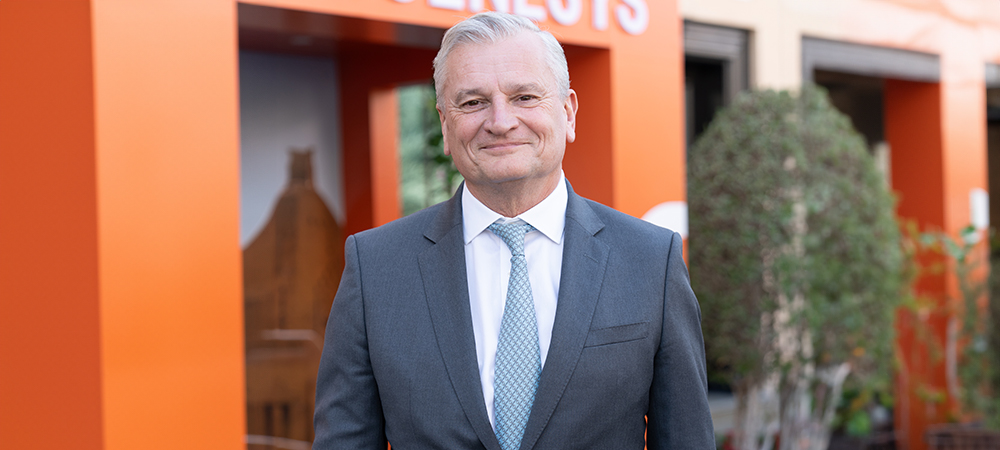In January this year, Genesys, a global cloud vendor in AI-powered experience orchestration, announced it has entered into an agreement to acquire Radarr Technologies, an AI-based social and digital listening, analytics, and consumer engagement company. Olivier Jouve, Chief Product Officer for Genesys, in conversation with Lynchpin Media’s Arun Shankar describes the rational and strategy behind the acquisition.
The usage of digital interactions to reach the contact centre in UAE and Saudi Arabia exceeds the rest of the world at 49% versus 25% for the Western world, triggering Genesys’ strategic acquisition of Radarr, a specialist vendor for social media public analytics. Highlights of the discussion with Olivier Jouve, Chief Product Officer at Genesys.
Please describe the rationale behind the acquisition of Radarr?
We realised that two countries and this region in general are very eager to use social media public as a channel for the contact centre. And it is a generation effect with a lot of young people. Our approach to the contact centre has always been what we call channel less, which means all channels should have the same experience and we should not push someone to use the physical channel. We should listen to all the channels.
So this includes WhatsApp, voice mail, whatever people want to use, and social media public actually something that people use a lot here and expect all the brands to listen and respond.
We looked at different options and that is why we found Radarr, which is absolutely cutting edge, born in the cloud, social media, analytics, listening analytics company. And that is why we are making this acquisition
This is to really to integrate the world of public social media into our platform. It is going to be available later this year, but it will have an integration quickly. And so we can use that as a channel to listen and respond.
Was the decision to acquire Radarr based only on the user behaviour of Saudi Arabia and UAE?
No, for the entire region, but the way I see what is happening in Saudi Arabia and in the region is something that is going to happen globally.
From a communication perspective, this region is a bit ahead of Europe and North America and with rest of the regions in the world. So for us it is kind of anticipating what is going to happen in the near future.
If you look at the number of digital interactions versus voice in North America it’s about 18-20%; it is about 25% in Europe; and here it is 49%. 49% is the ratio of incoming data via digital channels versus the incoming data. So that means the country is ahead in digital transformation.
In digital channels, probably the biggest one is WhatsApp. People here when they want a service, a brand, they just post it on X and they are expecting the brand to respond. They are not going to reach directly to the contact centre and call or even text. They just put it in public and wait for the answer.

When you were planning the acquisition of Radarr, how did you build the financial justification model and the Roi model?
So there are two things. There is a strategic move, which is something we need because our customers need it. So that is really part of the value.
And then there are all the discussions about what is the best solution available, is that compatible with our platform? And then putting the business plan together.
I would say for this acquisition, it is really a need that we had to cover. So we always have the discussion between should we build, we have a team of 1,700 developers, should we build or should we buy?
So that is where the financial model is built, But Radarr comes with very specific skills that are going to really make our development team and our solution much richer.
I own the P&L for the solution. So that goes to my CEO and to my CFO. And that is discussion we have together and we look at the potential of the solution and then we build a plan, which is going to be sold within the Genesys cloud as an add-on. And we built the financial models.
But on that one, it was more about we absolutely need this in particular to start with this region. We absolutely needed the capabilities.
The acquisition of Radarr is for a solution capability. Is it not important to be the biggest and the best in selective industries?
So that is a very interesting question because the contact centre by definition is pretty horizontal. Globally, the largest vertical markets are financial, followed by healthcare, government, retail, and the technology industry.
But with AI it becomes more and more vertical because the way you organise self-service, by trying to understand the vernacular of specific languages, and then you get into industries. So that is something we can customise while configuring our operational services or with a partner to bring more understanding of an industry.
What we do with verticals is we get certified because industries come with very specific certifications for healthcare, banking, for example. So we have all this certification around the world or from governments

How will the acquisition of Radarr benefit the Genesys contact centre?
For the contact centre, it is all channels. So it is voice and all the digital channels, that is how we see the contact centre. Gartner, calls it, channel-less experience. Whatever the channel you use, you should have the same experience. And we used to talk about omnichannel, but it was very siloed. Here you can start a conversation on WhatsApp and finish on the phone.
Radarr has the capability to listen to it. And in particular that Radarr comes with more than 50 different channels: Instagram, Twitter-X, TikTok and all the others.
What is really interesting is Radarr is coming with additional NLP technology in more than a hundred languages and dialects. They cover all the different languages from Asia. They cover Arabic and some of the main languages. So it is going to complete our analytics and our NLP stack.
We will add all the public social channels to the contact centre and we use NLP on everything. We use NLP to transcribe the voice into text. And then after doing sentiment, we do empathy analysis.
We already analyse from a brand perspective, sentiments in multiple languages, and then we have a module where we can respond and we respond through either public social or through another channel, which could be direct messaging.
How are you using AI, GenAI in the contact centre today?
We use generative AI to create summaries automatically. Why has the customer called and what is the wrap up card? And that is something that can take five to six minutes for every single agent to summarise the conversation. We do that automatically. So it is already available in English, it is coming later this year in Arabic. And we use NLP in Arabic already and we are developing more use cases in the coming months.
The way to look at the contact centre, we are not a data platform. We take data from all the different systems. We are deeply integrated with Salesforce and ServiceNow. So all the system of records we connect to, we use this data to score and build models in real time, to provide the 360 degree view. We go beyond the contact centre. We do what we call journey management and journey analytics. You need to have access in real time to all this data.
On which cloud platform is Genesys hosted and how are you managing data residency?
We are on AWS and we have 20 active regions. So we have multiple regions in the US; and we are in Frankfurt, Dublin, Tokyo, Osaka, Singapore. We are everywhere. We have launched in UAE in December 2023, which is a new region.
The reason we are hosting in all these different regions is there is a lot of regulation where people need data residency. We have more than 25 or 30 different types of compliance and certifications.
About 75% of our customers in Saudi Arabia are big retailers, and we have healthcare and we have government customers. For banking and for some government entities you need to have the data in Saudi Arabia. We are working very closely with AWS and as soon as they announce their region in Saudi, we will be in Saudi Arabia.


The acquisition of Radarr
In January this year, Genesys, a global cloud vendor in AI-powered experience orchestration, announced it has entered into an agreement to acquire Radarr Technologies, an AI-based social and digital listening, analytics, and consumer engagement company.
Radarr Technologies is a social and digital data analytics company that helps businesses make decisions from social media and digital conversations in real-time using data visualisations, dashboards and insights reporting. Radarr is run by co-founders Ram Bhamidi and Prerna Pant, and was set up in 2013 in Singapore, with offices in Singapore and Bengaluru, India. The co-founders and team will join Genesys upon completion of the acquisition.
With Radarr, Genesys will help organisations meet customers on the social channels of their choice so they can engage with them as naturally as they do with family and friends. To manage their social media presence, most organisations rely on point solutions that are disconnected from other customer engagement systems. This can leave them struggling to identify issues, resulting in fractured customer experiences and missed opportunities to drive business results.
Through the integration of Radarr Technologies, Genesys Cloud customers will gain direct access to new conversation streams from public social media posts across multiple platforms, including Apple App Store, Facebook, Instagram, X, YouTube, Google Play, Google My Business and more.
Additionally, the AI-powered Multilingual Sentiment Models within Radarr’s solutions will further strengthen the natural language processing of the Genesys Cloud platform. This will expand organisations’ ability to detect regional slang and colloquialisms across more than 100 languages, including the top 10 spoken worldwide and more than 40 Asian languages and dialects. This allows organisations to better understand customer sentiment for enhanced ability to deliver personalised experiences at scale.
Following the acquisition, which is expected to close in the first quarter of fiscal year 2025, Genesys will use Radarr Technologies social media insights for its 360-degree customer view fuelling Genesys AI. Genesys will be able to further connect attitudinal, sentiment and interaction data from across the CX continuum and provide the industry’s most comprehensive depth of consumer engagement touchpoints.
Organisations using Radarr Technologies capabilities on Genesys Cloud will be freed from the silos and limitations that prevent them from delivering personalised experiences wherever their customers are by harnessing new insights and capabilities to create loyalty and gain a competitive edge.
Genesys Cloud, with its AI-powered orchestration platform, delivers empathetic, personalised experience at scale. The Genesys fiscal year 2025 is February 1, 2024-January 31, 2025.

What is public social media?
Social media as a public utility is a theory postulating that social networking sites, such as Facebook, Twitter, YouTube, Google, Instagram, Snapchat, are essential public services that should be regulated by the government, in a manner similar to how electric and phone utilities are typically government regulated. It is based on the notion that social media platforms have monopoly power and broad social influence.
Fundamentally it is about the conversation. In contrast with traditional media, the nature of social media is to be highly interactive. Social media lets people interact and communicate with each other. This has become a standard word for online cultural exchange and a dominant way for individuals to engage on the Internet. By using social media individuals become more closely and strongly connected than ever before.
Social media is defined as a group of Internet-based applications that build on the ideological and technological foundations of Web 2.0, and that allow the creation and exchange of User Generated Content.
Click below to share this article


